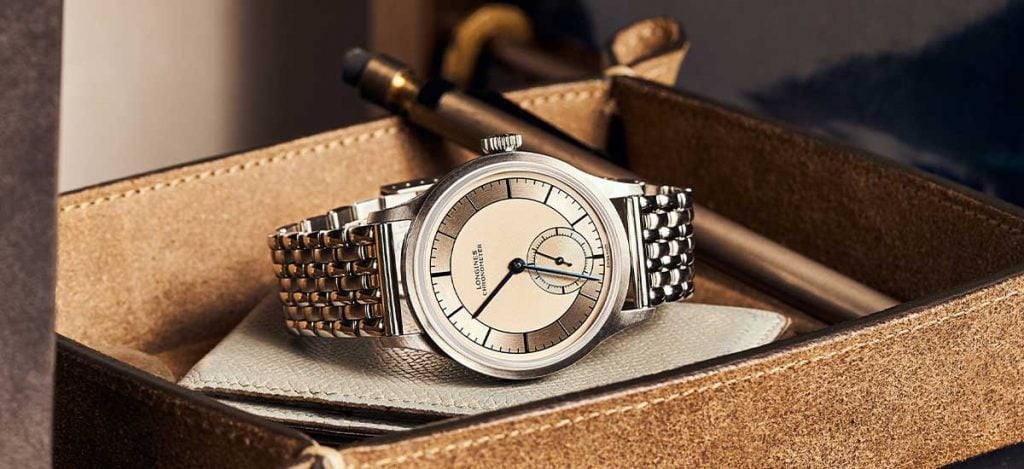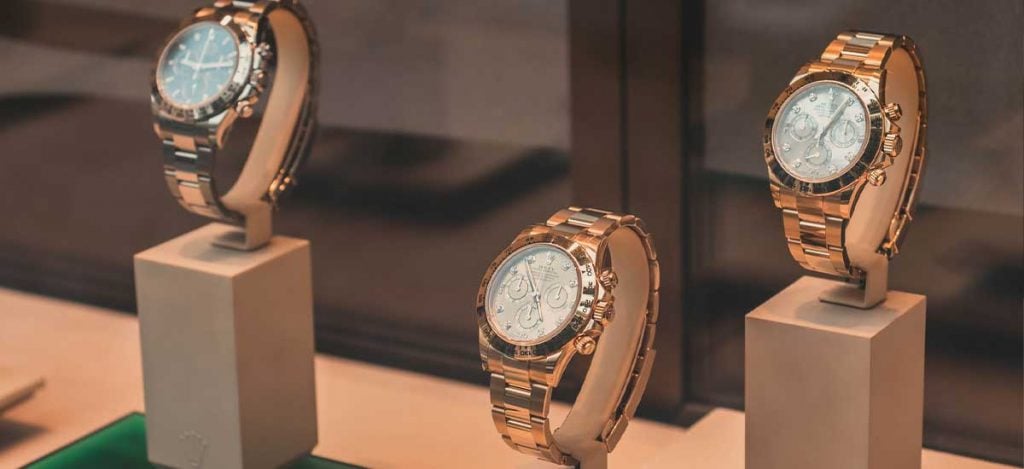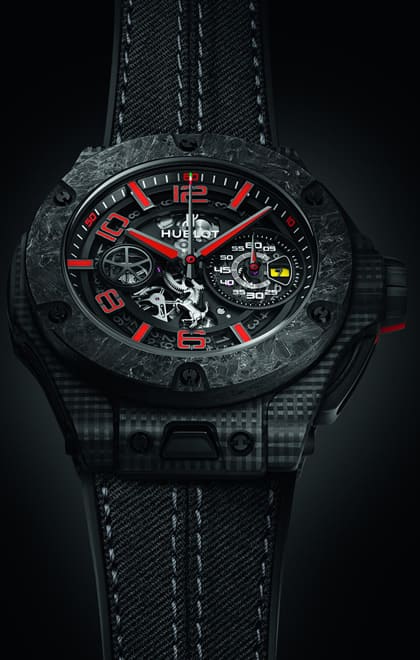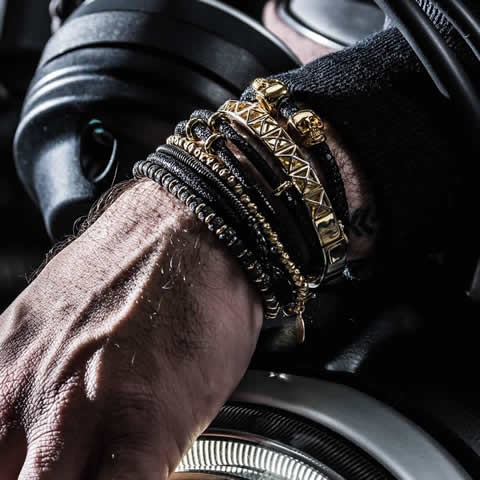Longines Vs. Rolex Watches (Is The King Overpriced?)
If you’re new to the luxury watch scene, it’s easy to quickly say “Longines or Rolex” is a brain-dead comparison. See it this way. Rolex is the number one watchmaker in the world, and any timepiece from the brand is synonymous with wealth, craftsmanship, and engineering wonder.
Longines is also a prestigious watchmaker with a long and successful history. It’s been one of the top 5 swiss watchmakers for centuries and produces precision watches that appeal to a mass audience. But how do they compare with the King, Rolex?
Folks come in asking about these two brands, so we’ve shared this guide to explain all you need to know. Whether you’re trying to choose between buying a vintage Longines or considering if a Rolex is worth saving up for, you’ll find answers. This article explains their history, craftsmanship, watch quality, popularity, and price to help you make an informed decision.
Similarities and Differences Between Longines And Rolex
It’s always a long read to cherish the culture of a watchmaker, so here’s a summary of their similarities and differences before we dive in.
Similarities
- Both are Swiss watchmakers
- They are both older than a century
- Both make precise mechanical watches
- Both started with a different name
- Both created their masterpieces with outside help
- Both offer COSC-certified watches
Differences
- Longines is an entry-level luxury watch brand, while Rolex is both a luxury and ultra-luxury brand.
- Rolex has a 5-year warranty, whereas Longines offers a 2-year limited warranty.
- It’s cheaper and more convenient to buy replacement straps for a Longines watch than a Rolex
Now let’s dive deeper into the history of these prestigious watchmakers to unearth the values and traditions that kept them in business.
Longines’ Long and Rich History

Longines was established in 1832 by Auguste Agassiz in the mountains of St Imier, Switzerland.
Because of Auguste’s partnerships with two lawyers, Henri Raguel and Florian Morel, the company was initially called Raiguel Jeune & Cie. After the duo retired fourteen years later, Auguste assumed sole ownership.
Auguste then set the wheel of success and prestige in motion when he brought in his nephew, Ernest Francillon, as a mentor years later. His mentee made a bold first impression of producing only crown-wound pocketwatches in an era of key-wound pocket watches (time flies!). So Auguste ultimately passed on the company to Ernest when he retired from weary health.
Under Ernest Francillon, the swiss watch manufacturer focused on mass production in the 1860s. He built a solid reputation for Longines, but they soon became the target of counterfeiters, who stole business and nearly tarnished that image (crucial for a luxury watch company). So he patented the company name in 1880 and registered the oldest valid trademark, Longines’ iconic winged hourglass logo, in 1889.
They survived and flourished well into the 1980s with constant innovative designs while still affordable. Longines joined the 35 billion dollars valued Swatch Group – which includes big wigs like Omega SA, ETA, and Tissot – in the 1980s. The Saint-Imier-based watchmaker now uses movements from ETA (a prestigious conglomerate of swiss movement manufacturers). It’s not the best look for a luxury brand to outsource movement making, but it is perfect for Longines’ dedication to mass production.
Mass-Production Marketing
Longines’ quick transition to mass production started under Ernest Francillon when he built the factory in 1867. But we must credit the genius of his Technical Director, Jacques Davido, who ran the factory and created its first in-house movement in the same year – the 20A. Since then, they’ve sealed their place in history books as one of the largest watch brands with retailers and distributors worldwide.
Fun fact: Longines is named after the field its factory has sat on since 1867. It was called Es Longines, meaning the “Long Meadow.”
Rolex’s Century-Old Quest for First

Rolex entered the watchmaking industry relatively late but came in with a bang in 1905. The brand was first known as Wilsdorf and Davis but changed to Rolex SA in 1920 (and moved to Geneva, Switzerland).
A 24-year-old, Hans Wilsdorf, and his brother-in-law, Alfred Davis, established the company in London. It all started as a hustle. They imported Hermann Aegler Swiss movements, fit them in Dennison watch cases (all iconic watchmakers in their right), and sold them to Jewelers (without branding).
Rolex released many firsts, but the creation of the renowned oyster case – still used in most Rolex watches – put them on the trajectory of world domination in 1926. Hans Wilsdorf’s innovation was sparked by an issue of water and dust damaging watch movements. So he hired a case maker to build the world’s first waterproof and dustproof watch. He bought the patent from the innovators and marketed aggressively and exclusively – a tradition Rolex has held on to.
Exclusivity Marketing
Rolex’s founder, Hans Wilsdorf, believes, “Only marketing is needed to make a company successful.” Some of his many striking campaigns include displaying Rolex oyster watches in aquariums at their point-of-sale stores. But Hans’s genius 1927 marketing put Rolex on the map, as we hinted earlier. He gave an oyster-cased necklace watch to Mercedes Glietze as she prepared to become the first British woman to swim the English Channel.
The neck watch remained accurate and completely dry after the 10-hour swim in murky waters. In typical Rolex fashion, Hans Wilsdorf brilliantly advertised the historic feat on Daily Mail’s front page for a month straight. Since its inception, the brand has used this strategy of gifting pioneers appropriate Rolex watches to test in the field.
The first people to summit Mount Everest, Sir Edmund Hillary and Tenzing Norgay, for example, wore Rolex watches and were honored with the release of the Explorer models. Today, Rolex combines aggressive marketing, sponsorships, and limited supply to seal its place as one of the most valuable watchmakers in history.
If you didn’t know, Tudor is a Rolex subsidiary targeting enthusiasts who want a “cheap” Rolex – they use similar cases and bracelets but use off-the-shelf movements. Rolex has continued the tradition by sponsoring prestigious events, signing artists and sports icons, and testing timepieces in historic expeditions.
Fun fact: Rolex is a private firm operated through the Hans Wilsdorf Foundation (no public shares).
Prestige And Popularity
Longines and Rolex control half of the Swiss watch market shares along with Omega and Cartier. So we know they both sell like crazy, even though Longines has to achieve this with more units sold. In recent research, they dropped to fifth but remained a force to reckon with. Rolex, however, is in a different league and more in competition with brands like Richard Mille and Audemars Piguet for prestige for world domination.
I won’t be surprised if anyone knew about Rolex watches since they were teenagers, but it will amaze me if they know Longines. Rolex outshines Longines mainly because they not only market to high society circles but also target mainstream media. As a result, Rolex is present in the entertainment, sports, arts, exploration, technology, and even the wildlife scene, with sponsorships, endorsements, and loyal fans doubling as influencers.
Longines And High-Life Sponsorships
The St-Imier-based watchmaker, started supplying prestigious New York sporting officials as far back as the 1800s. With such early momentum, you’d already expect Longines to be a behemoth in mainstream sports. But instead, they only dominate elegant sporting events like horse racing, archery, and equestrianism.
Longines is the official timekeeper of the FEI Show Jumping World Cup, Archery World Cup, French Open, and Commonwealth Games. They even sponsored Formula One during the 1980s and continue to support other international skiing and horse racing events.
Rolex And Planet Domination
Rolex’s official sponsorships go deeper than sports into sea and space exploration, wildlife and arctic research, motorsports to yachting, and equestrian sports. They are also timekeepers for multicultural organizations and political leaders.
The Swiss luxury brand boasts o durability by regularly giving explorers, researchers, and astronauts Rolex watches on their expeditions. As a result, Rolex watches have survived space, the deepest ocean dives, arctic regions, and the highest mountains.
Rolex doesn’t fail to leave a mark in sports. Almost every sporting legend has at one time been a Rolex ambassador. In addition, they’re official sponsors of all four grand slam (U.S, Wimbledon, French, and Australian Open) tournaments and the Paris, Monte-Carlo, and Shanghai Masters. It’d take a long-form blog post to capture the depth of Rolex’s reach in sports, arts, and exploration.
See the list of superstars and celebs who’ve worn either watch brand to compare:
Most Iconic Rolex Wearers
- Paul Newman – his Rolex Daytona (Ref. 6239) is the most expensive watch Rolex sold at an auction
- Roger Federer
- British Royal Family
- Too many notable figures to mention
Most Iconic Longines Wearers
- Charles Lindbergh
- Albert Einstein
- Jennifer Lawrence
- Humprey Bogart
- British Royal Family
- Andre Agassi
Hopefully, you’ll notice a trend of how Rolex attracts only the best of the best. As a result, it’s not fair fighting ground regarding who’s more famous between both brands. So, let’s see who fairs better in craftsmanship.
Craftsmanship
Avid horologists know it’s not just telling time that makes a luxury brand but its prestige, complications, and attention to detail, among others. Look at it this way, the Swiss industry is known for world-class watchmaking, and Rolex and Longines use the best crop. While Longines and Rolex employ world-class artists, the quality of their timepieces varies as much as we want to think Rolex is overpriced. Here’s an overview of how they craft watch parts.
Cases
The most common case material both swiss watchmaking behemoths use is stainless steel. The Longines steel is known to be durable and reasonably scratch-resistant, simply as durable as a Rolex. But Rolex uses a patent steel material, Oystersteel, which is exclusive to the brand and has been field-tested in the harshest conditions, as you’ve learned earlier.
Movements
The two brands produce mechanical movements in-house, but Rolex makes it a tradition. The Swiss watchmaker stopped all production of quartz movement in 2001 after 30 years of experiments. The dedication to in-house production and obtaining COSC accuracy certifications could take a year to produce one Rolex timepiece.
Nevertheless, the traditional craftsmanship of the Geneva-based watchmaker is what many watch lovers, enthusiasts, and collectors value over any Longines. That’s not to say Longines movements are inferior. However, they also produce Quartz movements that are cheaper and unartistic to most connoisseurs.
But the dealbreaker is that Longines’ mechanical movements also come from their sister company ETA SA, not in-house. Nevertheless, they are still reputable watchmakers, with an output of only 20 percent quartz watches and 80% mechanical movements. But the attention to detail and finishing of Rolex is unmatched.
Bracelets
We see a similar trend of functionality and exclusivity in making Longines and Rolex bracelets. The former makes durable watches that are readily available for replacement. But Rolex bracelets combine durability, exclusivity, and function.
These qualities justify the price gap between both brands that you’ll see soon in this article. For one, Longines sells replacement stainless steel, leather, rubber, and NATO straps that you can swap for under $300. In addition, you can have a collection of watch bands to dress different occasions.
Meanwhile, only Rolex Cellini models use a leather strap, and you must contact their service center for a replacement bracelet (of any Rolex watch). Also, Rolex’s Oysterflex rubber bracelet is only available in 18-carat gold editions of the Yachtmaster, Daytona, and Sky-Dweller. Finally, Rolex’s celebrated stainless steel bracelets, the Oyster and Jubillee, are highly scratch-resistant and comfortable with on-the-fly micro-adjustments.
Here’s the thing. A typical Rolex strap replacement costs anywhere from $1,000 to about $5,000 and could take weeks. You must have the corresponding watch model as proof, plus Rolex keeps the old band. It’s this exclusive in-house servicing that makes Rolex more valuable. But Longines gives the owners to buy straps online or at an authorized local watch repair shop.
Ultimately, Rolex bracelets are one of the best in – if not the best – industry. Longines can only be proud that its straps are durable and comfortable, not compete with Rolex.
Price Is A Big Rolex Win
Rolex is unsurprisingly out of Longines’ league for watch price points. The cheapest new or used Rolex costs more than 10x the price of a Longines. To put it in perspective, a Rolex Datejust (the brand’s most affordable collection) costs around $5,000 to $6,000, and a Longines Conquest V.H.P. (their most inexpensive model) for under $1000.
It looks unfair to compare a Longines’ quartz watch to a Rolex. So we’ll size up Longines flagship line, the HydroConquest, which costs anywhere from $1200 to around $2,500. That’s still less than two times the price of a Rolex Datejust.
Although some critics appeal that Rolex watches are overpriced, they’re clearly in different luxury brand categories. Longines (entry-level luxury) has focused on mass production for nearly 200 years, but Rolex becomes more exclusive by the year (ultra-luxury brand).
Comparing Longines HydroConquest To The Rolex Submariner
Coming off a price revelation, it’s only practical you see what makes the difference with a side-to-side comparison of both watchmakers’ watches. For this, we use pit Longines HydroConquest against Rolex’s flagship diver’s watch (this is a hot debate among watch connoisseurs).
HydroConquest ref. L3.883.4.96.9 Vs. Submariner
This won’t be an apples-to-apples comparison. It will take an entire post to cover. But you’ll understand why Longines might appeal to you and not just drool over Rolex’s glaring value. That’s why the price difference is the first thing that jumps at you between the two watchmaker’s diver’s watch collections.
The HydroConquest ref. L3.883.4.96.9 (the most expensive model) costs around $3,000, and a Submariner No Date ref. 114060 (one of the cheapest models) costs anywhere from $11,000 to about $15,000. What makes Rolex more expensive? Do they have superior features to Longines’? Or are they overpriced, as rumored?
Diving
The HydroConquest can reach depths of 300 meters, while the Rolex Submariner is field tested for 300 meters. Of course, most wearers won’t take a swim to talk less of a dive with either, but it’s refreshing to know they’re equal in dive capacities.
Steel Casing and Bracelet
Both watches have corrosion-resistant ceramic bezels for underwater use and stainless steel case and bracelets. But the Submariner dorns Rolex’s famous and more functional oyster bracelet. Also, unlike the HydroConquest or any Longines steel strap, you can adjust the Submariner’s bracelet to 5mm without using tools to remove links.
In-House Movements
The Longines HydroConquest uses a self-winding automatic caliber that beats at 25,200 vibrations per hour. It’s built in-house and has a 40-hour battery reserve. On the other hand, Rolex’s Submariner No Date also uses a self-winding, in-house movement, the 3235 caliber. However, it’s two steps ahead of the HydrConquest, with its magnetic field resistance and 42-hour battery reserve feature.
Whether these features are worth the $12,000 value difference and hassle is up to you. If you are searching for a functional diver’s watch, the HydroConquest is well-qualified. But a connoisseur, wealthy fanboy, or diver would prefer a Submariner to stack his collection, enjoy the symbol status, or the battery edge.
Does Longines Retain Value?
Like any luxury watch brand, you may wonder if buying a Longines watch would prove a good investment. Of course, many folks buy a Rolex to hedge against inflation, but you may see a different value in a Longines.
Rolex is hailed as the King of Resale Value for a good reason. It’s basic economics. Demand for Rolex watches outstrips supply straight from the factory, so authorized dealerships are always out of stock or carry older models. So instead, determined investors or buyers shop from trusted online dealers, preferably with a verifiable store, but pay more than the official retail price.
Exquisite Timepieces, for instance, sells authentic, pre-owned, and unworn Rolex watches online and in-store in Florida. The only way you’re getting a Rolex effortlessly is if you’re an ambassador or notable figure who received one as a gift. Conversely, Longines has an official online store, and many trusted stores and distributors worldwide.
Read that again. Yes, distributors too. So you see how Rolex is the king of resale? Ultimately, the resale value – for any watch – depends on the previous owner’s status, model, and condition. Typically, a Rolex could see a 16% to over 100% increase in two years, but only a mint-condition Longines will scratch this value.
Pros of Longines
- Affordable
- Prestigious Swiss watchmaker
- Micro-adjustable leather straps
- Can be bought without a “wait list” in stores
- Oldest active trademark logo
- COSC-certified
Cons of Longines
- No micro-adjustment in stainless steel bracelets
- ETA-made caliber
Pros Of Rolex
- Most valuable swiss watch manufacturing brand
- One of the best bracelets in the watch industry
- King of resale value
- Exclusivity
- All watch parts are made in in-house
- COSC certified chronographs
Cons of Rolex
- Time-consuming after-sale service due to exclusivity
- Overwhelming replicas and fakes
Frequently Asked Questions
Yes, Longines is a luxury brand established in the 1800s. Although they use quartz movements, they also build mechanical movements in-house at their St-Imier factory. However, Longines is an entry-level watch brand offering watches that cost around $1,500 to about $7.000.
Yes, Longines carries many entry-level watches that cost anywhere from $1,000 to $2,000. Their best-selling models, Flagship Heritage and Conquest, sell for around as low as $1,500 and $800, respectively. However, some of their more pricy models with precious metals and complications, like the 47.50MM Longines Weems Second Setting Watch, sell for over $20,000.
Longines Vs. Rolex: Final Thoughts
In the end, Rolex is a better luxury watchmaker than Longines. As the largest swiss brand, it produces all its parts exclusively in-house, sponsors all walks of life, signals success, and is the king of resale value.
If you don’t fancy the attention and time-consuming after-sale service, Longines will appeal to you. And prefer a prestigious yet affordable vintage or modern timepiece. But if I had to pick between a Rolex and Longines (with no budget), I’d grab a Rolex model without a second thought.
What do you think? Was the Longines vs. Rolex comparison a fair battle? If you found this comparison interesting, share it with other watch lovers and collector friends in your circle. Check out the Exquisite Timepiece store for authentic, new, and pre-owned Rolex and Longines masterpieces.
About Exquisite Timepieces
Established in 1998, Exquisite Timepieces is your one-stop shop for all things luxury watches! We are an authorized dealer for 60+ luxury watch brands including Omega, Hublot, Seiko, & Longines! We are proud to showcase one of the world’s largest pre-owned watch collections, including renowned brands like Rolex and Patek Philippe. Check out our brand new watch arrivals here and popular pre-owned listings here.








